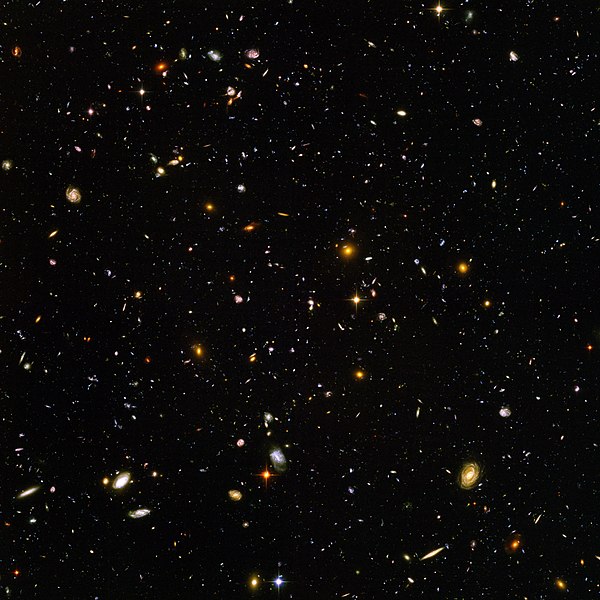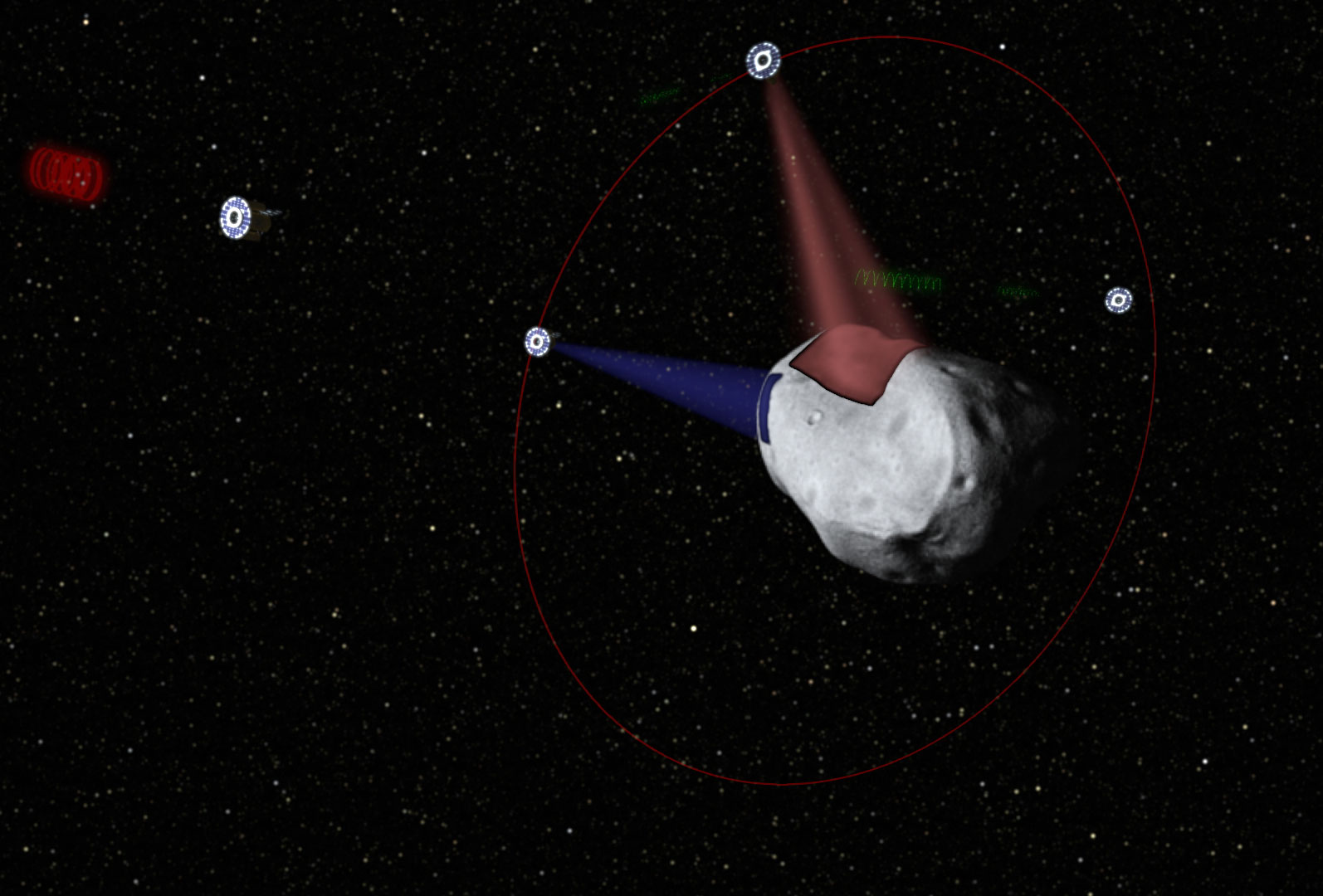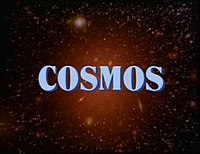
Breaking News from Space.com:
Asteroid Miners Wanted to Tap Space Rock Riches
by Mike Wall SPACE.com
Senior Writer
Date: 24 April 2012 Time: 05:58 PM ET
http://www.space.com/15416-asteroid-mining-planetary-resources-hiring.html?utm_source=feedburner&utm_medium=feed&utm_campaign=Feed%3A+spaceheadlines+%28SPACE.com+Headline+Feed%29&utm_content=Google+Feedfetcher
If you've ever wanted to be an asteroid miner,
here's your chance. The billionaire-backed company Planetary Resources, Inc., which aims to extract water and precious metals from near-Earth asteroids, is looking for a few good engineers. The firm actually formed in 2010 but just revealed itself and its ambitious goals today (April 24) — and it hopes some talented job-seekers took notice.
"One of the reasons that we chose to announce the company at this time is because we're beginning to aggressively search for the world's best engineers, to complement our team," Planetary Resources co-founder and co-chairman Peter Diamandis said during the press conference. "And it's tough to do that in the quiet."
To be clear, Planetary Resources is looking for engineers to help design and build a fleet of asteroid-mining robots, not a motley crew led by Bruce Willis to combat a space rock "Armageddon"-style. But new hires will have a hand in turning asteroid mining, a concept once only the stuff of science fiction, into a reality, officials said. [Images: Planetary Resources' Asteroid Mining Plans]
Big dreams, small company
Planetary Resources is no fly-by-night operation. Its co-founders, Diamandis and Eric Anderson, are pioneers of the private spaceflight industry, and it counts among its investors Google execs Larry Page and Eric Schmidt, who are worth $16.7 billion and $6.2 billion, respectively.
Further, the company's advisers include filmmaker and adventurer James Cameron, former NASA astronaut Tom Jones and MIT planetary scientist Sara Seager.
Planetary Resources officials said the platinum-group metals it plans to extract will help lower the cost of many products here on Earth, including hand-held electronic devices and monitors for televisions andcomputers.
And asteroid water could help open up the solar system to exploration, they added.
Water can be broken into its constituent hydrogen and oxygen, the chief components of rocket fuel. So the company's efforts could lead to the establishment of in-space "gas stations" that allow many spacecraft to refuel cheaply and efficiently.
Planetary Resources plans to do its asteroid mining on the cheap, using swarms of low-cost robotic spacecraft to identify resource-rich space rocks and extract material in deep space. It hopes to have identified some suitable targets within the decade, though actual mining activities will come later.
The company currently employs about two dozen engineers, and Diamandis said it hopes to stay small so it can continue to move quickly and keep costs down. But Planetary Resources does have a few openings right now.
"We are hiring people. We're trying to hire the absolute best of the best of the best," Anderson said. "It became time to pull back the cover and start to operate publicly."
Lots of interest
While Planetary Resources' grand unveiling came today, speculation about its intentions has been swirling for about a week or so, ever since the company released a media alert that divulged a few tantalizing details.
The company will likely have many resumes to sift through, for the media attention has already driven many interested folks to contact Planetary Resources, officials said.
"In the last few days, since news of our company has gotten out, we have been absolutely overwhelmed by the thousands of messages, and the volunteers who want to help change the way space is explored," said Planetary Resources president and chief engineer Chris Lewicki.
"So, in the near future, we've got your information," he added. "We'll be in touch. We'll be reaching out. And in this year, and in the years to come, we'll be working together as a planet to make this happen."
ABOUT THE AUTHOR

Michael was a science writer for the Idaho National Laboratory and has been an intern at Wired.com, The Salinas Californian newspaper, and the SLAC National Accelerator Laboratory. He has also worked as a herpetologist and wildlife biologist. He has a Ph.D. in evolutionary biology from the University of Sydney, Australia, a bachelor's degree from the University of Arizona, and a graduate certificate in science writing from the University
of California, Santa Cruz
You can follow SPACE.com senior writer Mike Wall on Twitter: @michaeldwall. Follow SPACE.com for the latest in space science and exploration news on Twitter @Spacedotcom and on Facebook.

Planetary Resources plans to develop prospector probes, which will determine the composition of asteroids before they are mined.
CREDIT: Planetary Resources

Planetary Resources plans to build swarms of low-cost robotic spacecraft to extract resources from near-Earth asteroids.
CREDIT: Planetary Resources
Asteroid Mining Venture Backed by Google Execs, James Cameron Unveiled
by Mike Wall, SPACE.com Senior Writer
Date: 23 April 2012 Time: 09:00 PM ET
http://www.space.com/15395-asteroid-mining-planetary-resources.html
A newly unveiled company with some high-profile backers — including filmmaker James Cameron and Google co-founder Larry Page — is set to announce plans to mine near-Earth asteroids for resources such as precious metals and water.
Planetary Resources, Inc. intends to sell these materials, generating a healthy profit for itself. But it also aims to advance humanity's exploration and exploitation of space, with resource extraction serving as an anchor industry that helps our species spread throughout the solar system.
"If you look at space resources, the logical next step is to go to the near-Earth asteroids," Planetary Resources co-founder and co-chairman Eric Anderson told SPACE.com. "They're just so valuable, and so easy to reach energetically. Near-Earth asteroids really are the low-hanging fruit of the solar system."
Planetary Resources is officially unveiling its asteroid-mining plans at 1:30 p.m. EDT (1730 GMT) Tuesday (April 24) during a news conference at Seattle's Museum of Flight.
Asteroids A-Plenty
NASA's Dawn spacecraft is currently orbiting the giant asteroid Vesta, the first of two space rocks its mission will visit. This will be our best look yet at an asteroid, and what the probe digs up could help scientists answer several questions about this and the hundreds of thousands of asteroids that populate the solar system.
Most asteroids, including Vesta, reside in the doughnut-like ring of the main asteroid belt that peppers the space between Mars and Jupiter. Other asteroids whirl in tight circles closer to the sun than the Earth, while a large number of them share planets' orbits. Not all asteroids are so happy to stay put, though: Some asteroids' orbits take them on planet-crossing swings through the inner solar system.
Given this variety of asteroids, some notably strange ones have popped up over our two centuries-plus of observations since the first asteroid, Ceres, was spotted in 1801.
In honor of Dawn's historic mission, which arrives at Vesta in the early morning hours of Saturday (July 17 EDT), here are seven of the solar system's strangest asteroids. (Note that space rocks out beyond the orbit of Jupiter, although somewhat asteroidal in nature, are classified as different bodies, and so we'll leave those alone for now.)
Most asteroids, including Vesta, reside in the doughnut-like ring of the main asteroid belt that peppers the space between Mars and Jupiter. Other asteroids whirl in tight circles closer to the sun than the Earth, while a large number of them share planets' orbits. Not all asteroids are so happy to stay put, though: Some asteroids' orbits take them on planet-crossing swings through the inner solar system.
Given this variety of asteroids, some notably strange ones have popped up over our two centuries-plus of observations since the first asteroid, Ceres, was spotted in 1801.
In honor of Dawn's historic mission, which arrives at Vesta in the early morning hours of Saturday (July 17 EDT), here are seven of the solar system's strangest asteroids. (Note that space rocks out beyond the orbit of Jupiter, although somewhat asteroidal in nature, are classified as different bodies, and so we'll leave those alone for now.)
Just Push Play>
What Great News Today. A group of Humans coming together with a grand vision to benefit All Humans of Earth.
Planetary Resources, Inc.: You are my new Space Heroes! Thank You for what You are Doing.
To All my Nature Lover Friends Around the World: Please share this post to let everyone know of this new Company, Planetary Resources. They are now hiring, according to the space.com article above by Mike Wall. They want the best of the best of the best.
(I do meet that qualification (!), however they were very clear they do not want a motley crew led by Bruce Willis. So that leaves me out as I am motley and too old. When one is 'too old' they are told they are over qualified for the position!)
I would love to be part of this adventure, so I am going to ask if Grandmothers can fill out an application for their Grandson effective twenty years from now!
Hello Planetary Resources:
Would You please consider a position for my Grandson 20 years from now? This is Bryan:
Thank You so much, brendasue (aka Grandma Poppy)
I am creating this blog as a collection of pages of things I want my Grandchildren to know about. Until they get old enough to read, this Collection is for All of Us! These Social Medias are the history books of the future.
In tonight's Feature Presentation, I have chosen my very first Space Hero: Carl Sagan. This man inspired me to think of Great Things. I hope you will look at the next short videos to hear his great words about "The Cosmos' He showed Us the Way! Enjoy this remarkable video lineup for tonight!
A Message for the People of Earth: Just Push Play>
http://en.wikipedia.org/wiki/Cosmos
Cosmos
In the general sense, a cosmos is an orderly or harmonious system. It originates from the Greekterm κόσμος (kosmos), meaning "order" or "ornament"[1] and is antithetical to the concept ofchaos. Today, the word is generally used as a synonym of the Latin loanword "Universe" (considered in its orderly aspect). The word cosmetics originates from the same root. In many Slavic languages such as Russian and Bulgarian, the word Космос cosmos means also the "outer space". In Mandarin Chinese, cosmos and universe are both translated as 宇宙 yuzhou, which literally translated means space-time (宇 yu = space + 宙 zhou = time)
According to current scientific theory, the cosmos began 13.7 billion years ago short scale in the Big Bang. The current diameter of the observable cosmos is thought to be about 93 billion light years.
The diameter of the entire cosmos is unknown. However, according to Alan Guth's inflation theory, the actual size of the cosmos is at least fifteen orders of magnitude larger than the observable universe. This means that if the inflation theory is correct, the 93 billion light year diameter of the observable universe is approximately as much smaller than the diameter of the entire universe as the diameter of a helium atom is compared to the diameter of theSun. This is equivalent to a minimum diameter of the entire cosmos of 1026 light years (100 septillion light years short scale).
The next 3 (very short) videos are great words from Carl Sagan:
from National Geographic:
(This one is not of the Cosmos Series. This video is the best I have viewed of the Universe. Push Play>)
Uploaded by OrionDocs on Jan 9, 2012
National Geographic presents the first accurate non-stop voyage from Earth to the edge of the Universe using a single, unbroken shot through the use of spectacular CGI (Computer-Generated Imagery) technology.
Building on images taken from the Hubble telescope, Journey to the Edge of the Universe explores the science and history behind the distant celestial bodies in the solar system.
This spectacular, epic voyage across the cosmos, takes us from the Earth, past the Moon and our neighboring planets, out of our Solar System, to the nearest stars, nebulae and galaxies and beyond -- right to the edge of the Universe itself.
When you finish this video, you will walk away from it with an awareness that you never had before, of the unseen astronomically massive universe that we float around on like a spec of dust in the ocean.
This video takes you on a journey through the universe as if you are watching a Sci Fi adventure. Yet you constantly have to remind yourself that what you're seeing is really out there.
Building on images taken from the Hubble telescope, Journey to the Edge of the Universe explores the science and history behind the distant celestial bodies in the solar system.
This spectacular, epic voyage across the cosmos, takes us from the Earth, past the Moon and our neighboring planets, out of our Solar System, to the nearest stars, nebulae and galaxies and beyond -- right to the edge of the Universe itself.
When you finish this video, you will walk away from it with an awareness that you never had before, of the unseen astronomically massive universe that we float around on like a spec of dust in the ocean.
This video takes you on a journey through the universe as if you are watching a Sci Fi adventure. Yet you constantly have to remind yourself that what you're seeing is really out there.
This is the series from Carl Sagan:

http://en.wikipedia.org/wiki/Cosmos:_A_Personal_Voyage
Cosmos: A Personal Voyage
Cosmos: A Personal Voyage is a thirteen-part television series written by Carl Sagan, Ann Druyan, andSteven Soter, with Sagan as presenter. It was executive-produced by Adrian Malone, produced by David Kennard, Geoffrey Haines-Stiles and Gregory Andorfer, and directed by the producers, David Oyster, Richard Wells, Tom Weidlinger, and others. It covered a wide range of scientific subjects, including the origin of lifeand a perspective of our place in the universe.
The series was first broadcast by the Public Broadcasting Service in 1980 and was the most widely watched series in the history of American public television until The Civil War (1990). As of 2009, it was still the most widely watched PBS series in the world.[1] It won an Emmy and a Peabody Award and has since been broadcast in more than 60 countries and seen by over 500 million people.[2][3] A book was also published to accompany the series.
| Cosmos: A Personal Voyage | |
|---|---|
 Cosmos title card | |
| Genre | Documentary |
| Created by | Carl Sagan Ann Druyan Steven Soter |
| Directed by | Adrian Malone |
| Presented by | Carl Sagan |
| Composer(s) | Vangelis; various artists |
| Country of origin | United States |
| Language(s) | American English |

Sagan explains planetary orbits.
Cosmos was produced in 1978 and 1979 by Los Angeles PBS affiliate KCET on a roughly $6.3 million budget, with over $2 million additionally allocated to promotion. The program's format is similar to earlier BBC documentaries like Kenneth Clark's Civilisation, Jacob Bronowski's The Ascent of Man and David Attenborough's Life on Earth. (The BBC – a co-producer of Cosmos — later screened the series, but episodes were cut to fit 50-minute slots.) However, unlike those series, which were shot entirely on film,Cosmos used videotape for interior scenes and special effects, with film being used for exteriors.
Turner Home Entertainment purchased Cosmos from series producer KCET in 1989. In making the move to commercial television, the hour-long episodes were edited to shorter lengths, and Sagan shot new epilogues for several episodes in which he discussed new discoveries (and alternate viewpoints) that had arisen since the original broadcast. Additionally, a 14th episode was added which consisted of an interview between Sagan andTed Turner, and this "new" version of the series was eventually released as a VHS box set. This same re-edited version was also released on 12" Laserdisc, a popular consumer format at the time and precursor to the DVD. Two episodes were released per disc (one episode on each side). The laserdiscs were sold separately, not in a boxed set configuration like the VHS tapes.
Cosmos had long been unavailable after its initial release because of copyright issues with the included music, but was released in 2000 on worldwide NTSC DVD, which includes subtitles in seven languages,[4] remastered5.1 sound, as well as an alternate music and sound effects track. In 2005, The Science Channel rebroadcast the series for its 25th anniversary with updated computer graphics, film footage, digital sound and updated scientific knowledge that had occurred in the past 25 years. Despite being shown again on the Science Channel, the total amount of time for the original 13 episodes (780 minutes) was reduced 25% to 585 minutes (45 minutes per episode) in order to make room for commercials.[5][6][7]
In 2009, Freemantle Media Enterprises released in the UK, a 5-disc DVD set of the original series plus with bonus science updates. The DVD set was digitally restored and remastered. Although a little grainy in places, it is generally considered to be the best reproduction of the original series to date.
Visit the You Tube Channel:http://www.youtube.com/user/SagansCosmos/videos
Carl Sagan's COSMOS
http://en.wikipedia.org/wiki/File:Hubble_ultra_deep_field_high_rez_edit1.jpg
image credit for top image
This concludes our look at Space Heroes and the Cosmos for tonight. Please come back to this page at any time to see it again!
Leaving You with one more great performance
....this is brendasue signing off from Rainbow Creek
O+O





No comments:
Post a Comment
Hi Everybody! Please say hello and follow so I know you are here! Due to the inconsideration of people trying to put commercials on my blog comment area, I have restricted use of anonymous posts. Sorry that some hurt all.
My public email is katescabin@gmail.com No spammers or trolls